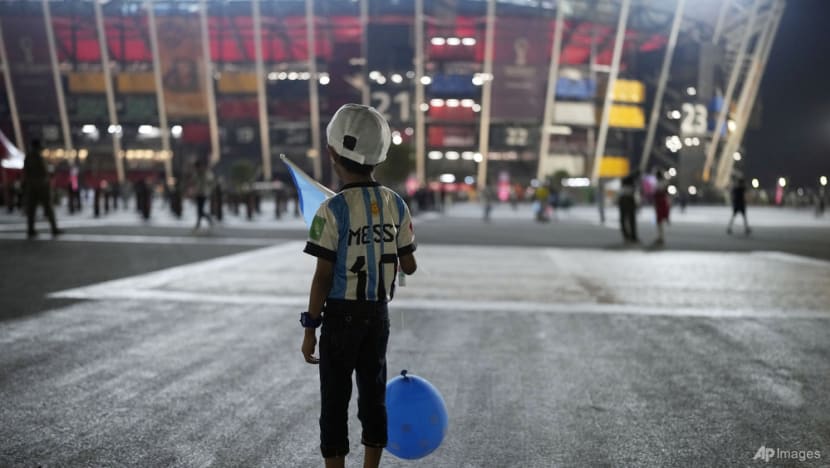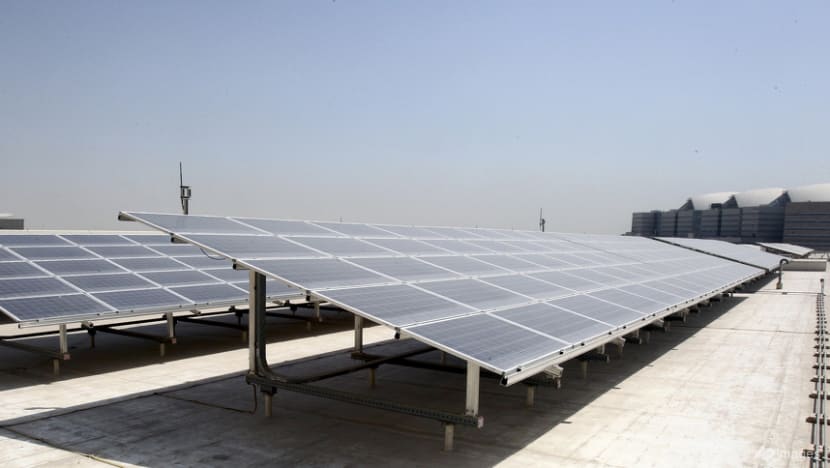Big sustainability push as Qatar targets first net-zero emissions World Cup
One of its eight stadiums for the tournament is made up of 974 recycled shipping containers, the first temporary venue in the tournament's history.

DOHA: The ongoing FIFA World Cup in Qatar is making history as the first edition of the tournament with a net-zero emissions target.
The sustainability goal in this year’s competition will set a precedent for future editions, which will also have to feature some of the sustainability objectives. They include, for example, requiring products and services supplied to the World Cup to meet minimum green standards.
Qatar’s green push has been the topic of criticism from some corners in the lead-up to the tournament, but it has pushed ahead with its plans.
QATAR’S GREEN PUSH
The host nation is using this event to develop and improve sustainability in the country for the longer term.
Among its efforts is to donate 170,000 stadium seats to countries in need of sporting infrastructure after the World Cup, and having irrigation systems that use only recycled water.
There are also stadiums built from recycled materials.
For instance, the Stadium 974 is the first temporary venue in World Cup history. Located 10km east of central Doha, the 44,089-seater stadium pays tribute to the area’s industrial history and Qatar's country code, 974.
The stadium incorporates 974 recycled shipping containers and will be fully dismantled after the tournament.

There are plans to have it rebuilt in Uruguay if the South American nation's bid for the 2030 World Cup is successful.
Uruguay is part of a joint bid, along with Argentina, Chile and Paraguay, to host the 2030 edition.
Ms Bodour Al-Meer, sustainability executive director of the Supreme Committee for Delivery and Legacy, said Qatar aims to use the tournament as a catalyst for positive change and to accelerate its national development goals through its sustainability programme.
“Our sustainability programme is the first ever joint sustainability programme between the (World Cup) host country and FIFA. It is totally aligned with Qatar National Vision 2030 as well as the United Nations Sustainable Development Goals,” she said.
The Qatar National Vision 2030 outlines the Middle Eastern country’s sustainable development targets to be achieved by the end of this decade.
FIFA has its own set of sustainability goals by 2030, and some breakthroughs in Qatar could pave the way to achieving them.
OFFSETTING EMISSIONS
For the millions of fans heading to Qatar to catch their favourite footballing stars in action, air travel remains the transport of choice. This makes up more than half of carbon emissions.
Offsetting the carbon footprint will take about two years beyond the tournament, for the country to prove that the World Cup has indeed achieved its net-zero targets.
"Because legacy is so important to us, we have established a Global Carbon Council, which is a voluntary offsetting programme that will help us in offsetting almost half of our emissions,” said Ms Bodour.
“The remaining emissions will be offset by the savings from Al-Kharsaah solar power plant, which is our country's new power plant.”
Located 80km west of Doha, the solar facility was inaugurated by Qatar's emir Sheikh Tamim bin Hamad al-Thani on Oct 18 this year. It spans 1,000 hectares - an area of around 1,400 football pitches - and has two million solar panels.
However, achieving carbon-neutral goals through offsetting may not be the best strategy, according to some experts.
Dr S Viswanathan, director of the Centre for Business Sustainability at Nanyang Technological University, said the quality of the offset can be questionable at times.
“Even with the best auditors, it is not easy to verify the additional offset itself,” he said.
“Unfortunately, if they especially want to offset all of the emissions coming out of travel, there might not be any other choices.”

An alternative method of measuring the effectiveness of Qatar’s green initiatives is for an independent audit report to be released around three months after the tournament, detailing data on carbon footprint at the event.
For Qatar, the sustainability efforts and rapid development of the city go well beyond the tournament.
"You cannot satisfy everyone. We do whatever we think will benefit our country,” said Ms Bodour of the criticism of Qatar’s efforts.“Anything we do and our sustainability strategy is to develop our country and to help accelerate the development of our country."
Catch free highlights and moments from the FIFA World Cup Qatar 2022™ at mewatch.sg/fifaworldcup

















